Thursday, December 10, 2009
Vamp and Tramp
Wednesday, December 2, 2009
Tuesday, December 1, 2009
Working Again.....
Untitled from Taylor Wamble on Vimeo.
Tuesday, November 24, 2009
Working
Untitled from Taylor Wamble on Vimeo.
Thursday, November 19, 2009
Critique Notes
working
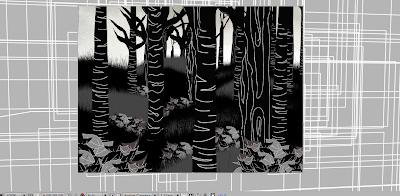

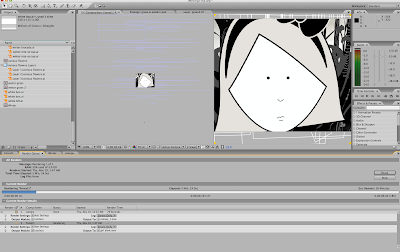
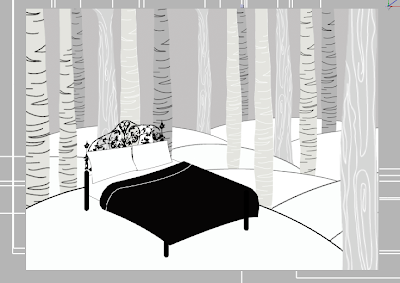
Monday, November 16, 2009
Assets in Scenes

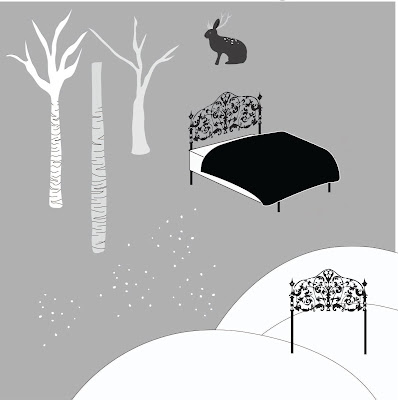
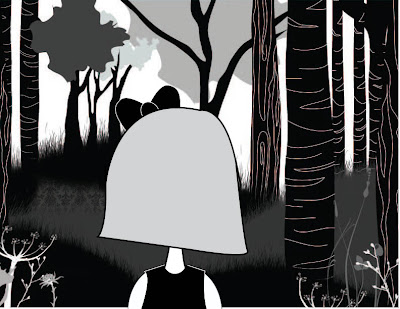
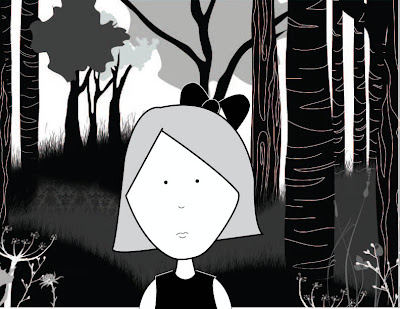
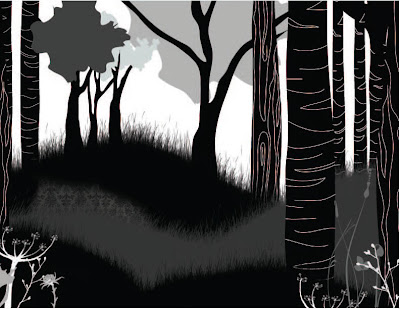
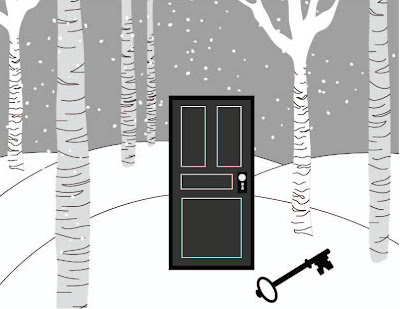
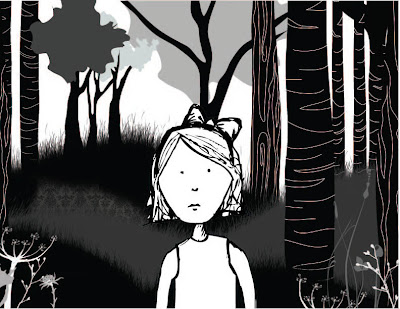
Wednesday, November 11, 2009
Final Project Plans
Tuesday, November 10, 2009
Revised Concept
A young girl is awoken from her sleep to find herself deep inside a wooded area. The landscape is lush with greenery and flowers (summertime). She gets out of bed and her attention is struck by the only living thing in sight, a jackelope. When their eyes meet, the jackelope takes off running through the woods, she curiously begins to follow it. As she is following the jackalope she begins to see doors placed randomly throughout the landscape. The jackelope runs through the first door, she follows with the intention of going through as well. The door shuts right before she can pass through. As she stands at the closed door, it disappears before her eyes. When the landscape is revealed again the season has changed from summer time to Fall. Leaves have fallen and continue to fall. She then spots a deer in the forest, like the jackelope she follows it until it goes through the door. Once again it shuts before she can enter. She stands at the door for a few moments until the door opens itself to reveal a snowy landscape, and her bed.
Untitled from Taylor Wamble on Vimeo.
More Ideas


Wednesday, November 4, 2009
Bill Plympton Master Class
Tuesday, November 3, 2009
Rough Ideas for Final
Genre:
Drama (surrealistic)
Logline:
An awoken girl wanders sleepily through a surreal landscape.
Synopsis:
Wandering through a foreign landscape, the protagonist (camera) is met with unusual wildlife. It begins with her chasing a rabbit. As soon as she loses the rabbit she, her attention is struck by some creepy, unusual happenings. Trees become anthropomorphic and grab at her and leaves swirl around her. She is met by other animals: birds and deer. Like the rabbit, they are frightened by her and run at the sight of her. She continues to wander aimlessly, searching for anything that she can connect with. She eventually makes it to the end of the forest and sees a clearing. Within that open area she sees her bed, and climbs in to finally find comfort.
Overall, this video is about loneliness and the inability to connect.
For this project I am expanding upon my previous project with the rabbit. I really have the urge to make that story longer and more developed. I would like for the camera to eventually make it outside of the forest. The girl will be met by strange encounters that don't necessarily make sense in the waking world, but are more than possible within a dream. I want the scene to appear much more surreal and developed. The scene is a dream, so I intend for things to appear out of nowhere, etc. to push the idea of surreality.
I want the mood to be similar as it was previously. To me it felt very somber and muted as it was, conveyed strongly by the limited color palette. The beginning (existing rabbit video) the tone is really dark, literally and figuratively. It is mostly black. I would like for the scene where she find the bad to be a pristine snowy scene. I want this to provide stark contrast to the darkness of the earlier scenes as well as conveying a strong sense of peacefulness.
I also want to stay with the first person narrative, the camera being the protagonist. I am considering adding a prelude to what I have already established, as well as extending the end. I may just end up continuing the story...depending on the input from the class.
I am really struggling with whether or not I want to introduce the audience to the girl. I can not decide if it would help or hurt my idea. On one hand the audience can connect with her and see her emotions. It would also open up my options for camera angle, which would be really nice. Perhaps, you can switch between the camera being her and seeing her? If that is a possibility I may go with that.



Thursday, October 29, 2009
Final edit, Midterm
Tuesday, October 27, 2009
Revised Midterm
Thursday, October 22, 2009
Midterm Working
Saturday, October 17, 2009
Visiting Artist_Julia Walker
Tuesday, October 13, 2009
Midterm Project






I am going to convey a dream of frustration I have had. It involves chasing after something and never being able to catch it. This dream involves me chasing a rabbit through a wooded area.
Thursday, October 8, 2009
Ideas for Larger Project
Matte Project
Untitled from Taylor Wamble on Vimeo.
Tuesday, October 6, 2009
Puppet
Untitled from Taylor Wamble on Vimeo.
Thursday, October 1, 2009
Video CoPilot Failure
Tuesday, September 29, 2009
Text Assignment response
Artist Essay





JOHN MAEDA
It is hard to put John Maeda in a box with a label. It seems as if the amount of things he does goes far beyond the title of simply a designer. If we must try to define what Maeda does, we could say that he is an artist, a graphic designer, as well as a computer scientist. He was born on Seattle Washington in 1966. He was originally a software engineering student at MIT. It was there that he became fascinated with the work of Paul Rand and Muriel Cooper, both influential designers. He continued on at MIT to get his Bachelor's and Master's degree. He concluded his education by completing his doctorate in design from Tskuba University in Japan. Needless to say, with and education like the one he has achieved, Maeda is absolutely brilliant not only intellectually but creatively as well. Maeda is currently the president of Rhode Island School of Design, one of the leading art and design schools in the country.
After graduating Maeda worked as a designer, developing projects for brands such as Cartier, Google, Phillips, Reebok and Samsung. Also, in 1996 he became the Associate Director of Research at the MIT Media Lab. There he was responsible for managing multiple research relationships with industrial organizations. Some of his accomplishments include having his early digital media work is in the permanent collection of the Museum of Modern Art in New York. Since 2001, he has shown in galleries all around the world and they have all been guarded with high esteem. Maeda has also published multiple books, his most recent being called Laws of Simplicity, a book that discusses the theme of simplicity as it relates to the digital world. He has also been recognized a one of Esquire magazines 21 most important people of the 21st century.
It is hard to describe much of John Maeda's work. Much of it is highly intellectually driven and incorporates his vast knowledge of computer technology rather than just the use of design. It is easy to look at his work and appreciate it for the beauty and concept, but it is hard to get a good grasp on how exactly he went about doing it. Much of his work is typography driven. Upon visiting his website, I saw that he has tons of examples of his work. Some of it is interactive. One example tells you to move the curser around the page and a snowflake appears and transforms as you continue to move. I later realize that this is an interactive calendar.
Much of Maeda's work is like this, seemingly inconsequential little explorations. However, they are beautiful and well composed. His work is certainly relevant to this class because he exploring the digital media platform. The uses a lot of kinetic type to convey concepts. He completed a whole motion calendar series for Shisheido that utilizes moving letters and numbers, which serves as great inspiration for our current project. He also has more whimsical work. For Reebok, he designed a colorful sneaker with hand writing as a graphic. He really pushes the concept of type and how it can be used in motion. His work is very sleek and beautiful. That is what attracted me to his work initially. I find his work extremely compelling and think he has a lot offer the digital media world. He is really utilizing his computer science knowledge and marrying well with a design aesthetic.
Links:
www.maedastudio.com/
Thursday, September 24, 2009
Week 5 Making Experiment Response
Tuesday, September 22, 2009
Week 5 Camera Experiment
Untitled from Taylor Wamble on Vimeo.
I had a hard time getting used to the whole camera thing. I guess its more beneficial when you use it to capture many angles and comprise the footage that way, unlike how i used it which was basically to zoom past stuff. It seems like I could have done that with scaling things up and down. This assignment too me forever and I only have 6 seconds. I began to realize that I could only go so far into z space before the camera inverts thus not much time to create my scene. I think I should have extended my poi more than I did. I don't know if this video really captures what I would like for it to. I don't know if the passing through the clouds aspect is successful.
Sunday, September 20, 2009
Artist Lecture Response
Thursday, September 17, 2009
Response Project 3
Wednesday, September 16, 2009
Tuesday, September 15, 2009
Response_Week 4_9.15.09
Thursday, September 10, 2009
Week 3, Response
Tuesday, September 8, 2009
Week 3, Proposal
Wednesday, September 2, 2009
Week 2_ List and Sketches
1. dream
2. subconscious
3. Sigmund Freud
4. interpret
5. escape
6. emotion
7. sensation
8. sleep
9. unexplained
10. mystery
11. perception
12. intuition
13. surreal
14. personal
15. mind reading
16. decoding dreams
17. dream diary
18. inspiration
19. nightmares
20. night terrors
21. psychology
22. spirituality
23. prediction of the future
24. prophecy
25. dream incubation-practice of cultivating dreams that were prophetic
26. Rapid Eye Movement- REM
27. fantasy
28. Carl Jung
29. anxiety dreams
30. sexuality
31. reoccurring dreams
32. ability to fly
33. running from something
34. inability to communicate
35. frustration
36. lucid dreaming-ability to control the characters
37. deja vu
38. daydream
39. sleep walking
40. metaphor
41. reenactment
42. childhood
43. repression
44. fluidity
45. Sandman
46. clouds
47. being hurt
48. trying to run
49. unable to gather materials
50. snakes
51. violence against others
52. holding grudges
53. unable to let go
54. relaxed
55. closed eyes
56. lifeless body
57. circle
Opposite:
1. control
2. consciousness
3. awake
4. tangible
5. blind
6. voluntary
7. reality
8. truth
9. existence
10. fact
11. pipe dream
12. wish
13. unable
14. stifled
15. relief
16. tension
17. relationships
18. open eyes
19. ignorant
20. closed minded
21. shut door
22. responsible
23. responsive
24. rigid
25. square
26. emotionless
27. cut off
28. simple
29. psychologist
30. capture
31. aware
32. cognitive thought
33. intention
34. human behavior
35. intellectual
36. verbal
37. mobile
38. understanding
39. clogged artery
40. a dam in water
41. prohibit
42. insomnia

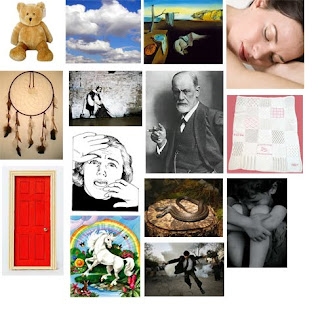


Monday, August 31, 2009
Working Concept
Wednesday, August 26, 2009
Initial Thoughts


I will start by saying that i feel completely overwhelmed by the thought of choosing a topic. I don't know how to describe how I want them to look technically because I don't really know enough about the programs, but I do have general concepts:
1. I have vivid dreams nearly every night. Oddly enough my dreams are often times about me being immersed in a fantastical scene full of pastries, mostly cupcakes and donuts. Im convinced that I have these dreams because in my real life I wont allow myself to indulge in those things because I know that they are bad for me. So really this dream that appears so whimsical is really about temptation and oppression. It reminds me of the Bosch painting Garden of Earthly Delights. From a distance the painting appears so happy but when you really study it, its pretty messed up. Its warning us that if we indulge in earthly pleasures then we are damned to hell. So basically, I would like to explore the concept of temptation and the effects it has on the psyche when oppressed.
2. Also, I would like to explore moving typography. I guess it would be like moving signage or advertisements. It could be a narration of a story or lyrics to a song. They type could be used to animate what the story/song is saying.
3. I really like the collage look to some of the videos I've seen. Ones that use actual photographs, drawings and other 2-D art to comprise a scene. I think it might be interesting to use some older materials, like a set of paper dolls or illustrations in an old book. I like the idea of using dolls a metaphor for confinement.
Screenings
In In the Realms of the Unreal most of the scenes are comprised of the drawings and illustrations of Henry Darger himself. The film has been comprised of these still 2-D illustrations that begin to come to life. The figures begin moving their arms and blinking their eyes, as if they are interacting with the viewer. Some of the scenes seem to be a visual collage comprised of photographs, drawings and vector images. There is an interesting contrast between the innocence and antiquity of these illustrations with the modern concept of motion graphics. The scenes remind me of pages in a coloring book or illustrations in books meant for small children. The film pans slowly over the illustrations, and many of the animated elements are hard to catch. There is a calmness and subtlety to the way in which the motion is being introduced to the 2-D medium.
The Kid Stays in the Picture is similar to the previous film in that it uses previously shot imagery and adds animation on top of that. In this film photographs are mostly being used, as well as stills from movies that Robert Evan's directed. The manipulation of the photographs is done by adding what appears to be vector animation. One example was a photograph of a man smoking a cigarette. Animation of an ignition and orange burning tip of the cigarette was added as well as an overlay of smoke. Some of the stills themselves have been altered. The people will be cut out and reoriented in the scene. There is a lot more type seen in this film. There are lots of newspaper stories that get shown as a collage of information. There is also a lot of panning from side to side and zooming in and out.
In the Ken Burns films, all of the imagery is still. The way that he manipulates the stills is to chose how the audience is able to view them. He slowly pans across the images so that you can see all of the detail. He then zooms out so that you can see the whole thing. Photos transition with a soft fade into the next. Though all of the imagery is still, he evokes a lot of motion through his cinematic techniques.